Newsletter Archive May 14, 2021
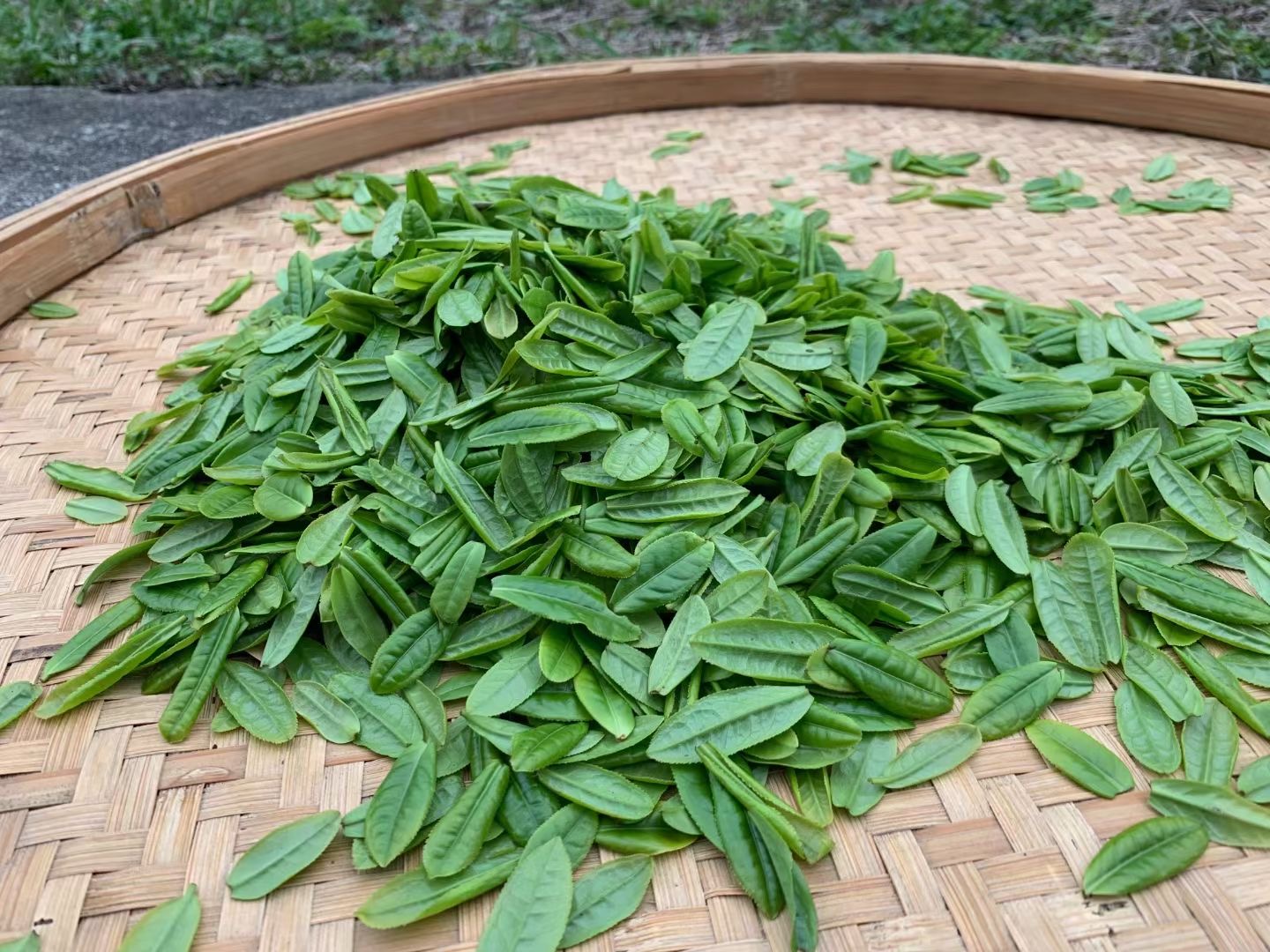
Something odd was going on at Anhui tea farms in the late 19th century. Communities of innovative tea makers, working in distant parts of the province, gave the world two of the strangest green teas ever produced: Tai Ping Houkui and Lu’an Gua Pian. These teas were not just unique compared to each other. They were (and are) far different from the way green tea was made anywhere else. Unlike last year’s more modern-style crops, this year we selected batches that were handmade using the old tools and traditional techniques that have set these teas apart for over a century.
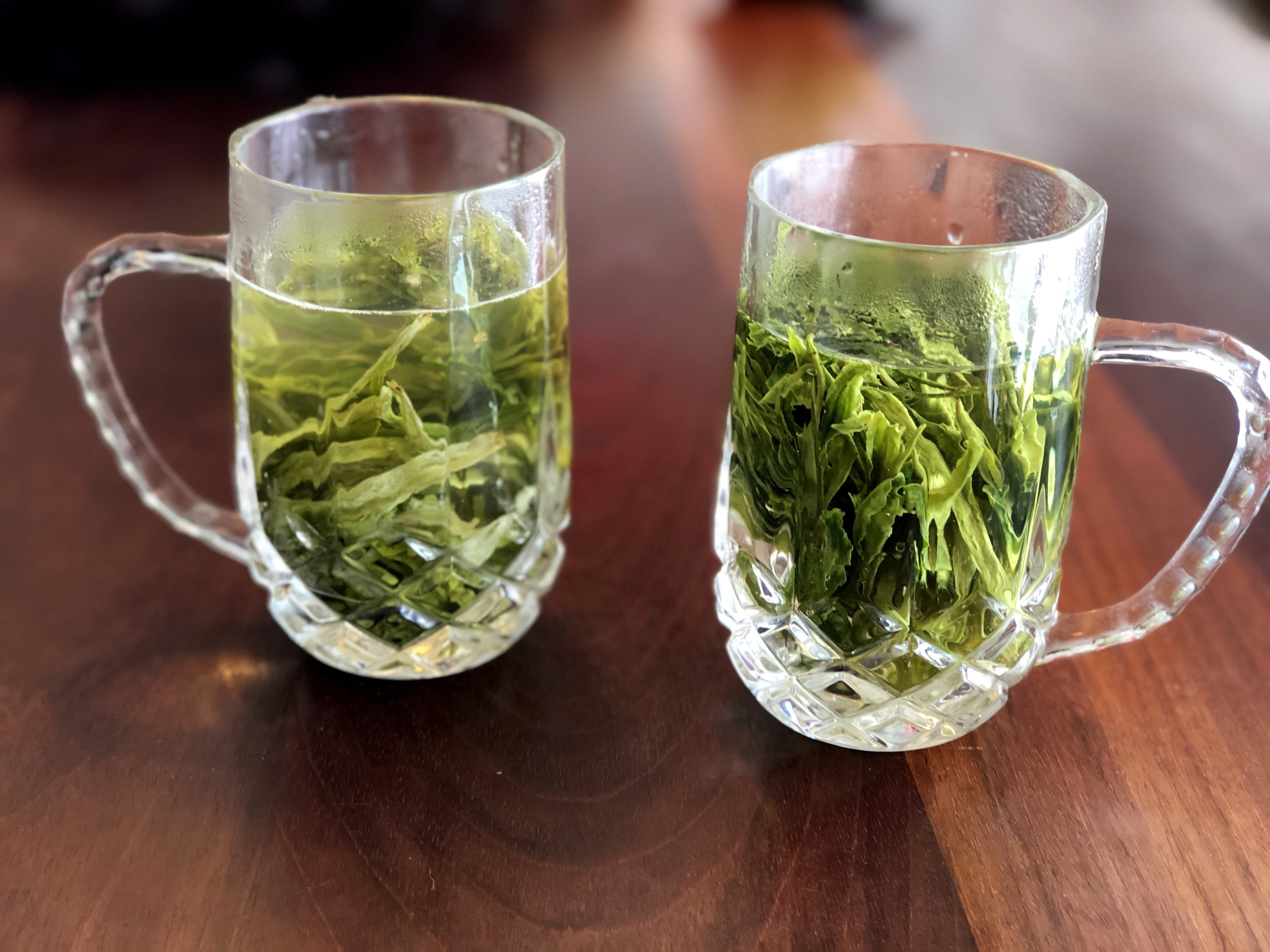
Austin and Zhuping first started buying these teas in 2007. The origins were downright remote then. They recall Tai Ping Houkui’s Hougang Village was only accessible by boat. Getting to Lu’an also took hours of car travel through a mountain valley that’s home to one of China’s earliest modern dams, precariously holding back floodwaters. Austin also remembers one tea maker in Lu’an cheerfully showing off the coffin he had built for himself. (It was stacked in the room next to his tea making equipment.) The same tea maker also had a beautiful garden of tea bushes growing on a sheer cliff face. Zhuping, perhaps rattled by the coffin, forbade Austin to climb up.
The origins, like their teas, still stand out.
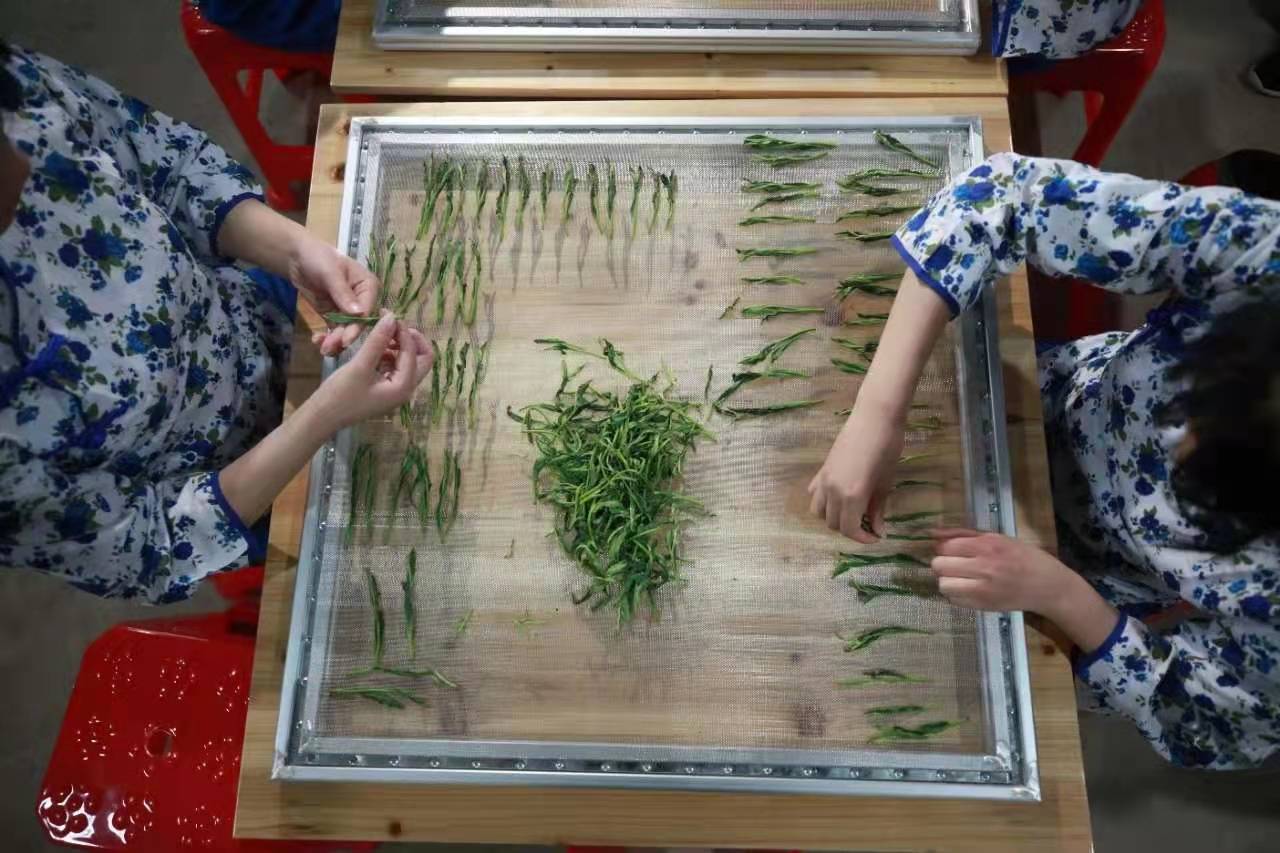
Every spring, tea families around Tai Ping lake pluck the massive leaves of an endemic tea bush variety known as “persimmon” (Shi Da Cha). They fire those large sprigs and meticulously press them flat into delicate spears. The result is a tea with lush green character, light but dynamic, with aromas of corn silk and orchid.
Be warned: Tai Ping Houkui will not fit in the average teapot. A tall glass is your vessel of choice here.
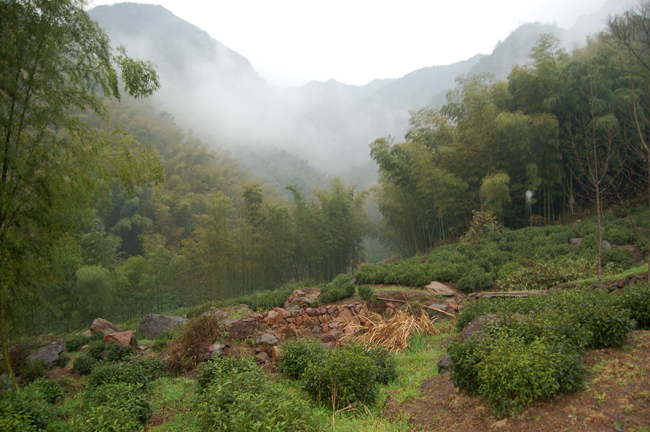
About 150 miles north, in the rolling hills of Lu’an, the processing techniques for Gua Pian get even stranger. Plucked a single leaf at a time, rolled with a broom, danced over an open hardwood fire. These traditional steps sound like a magic spell. They kind of are. With a faint toasted sesame aroma from its flame-drying, Gua Pian turns out thick and bright flavors of sweet grass and turnips.
Find out how these two teas captured the imagination of the tea world and experience them for yourself.
Not all Longjing is created equal.
Learn how to tell the difference with a new sampler.
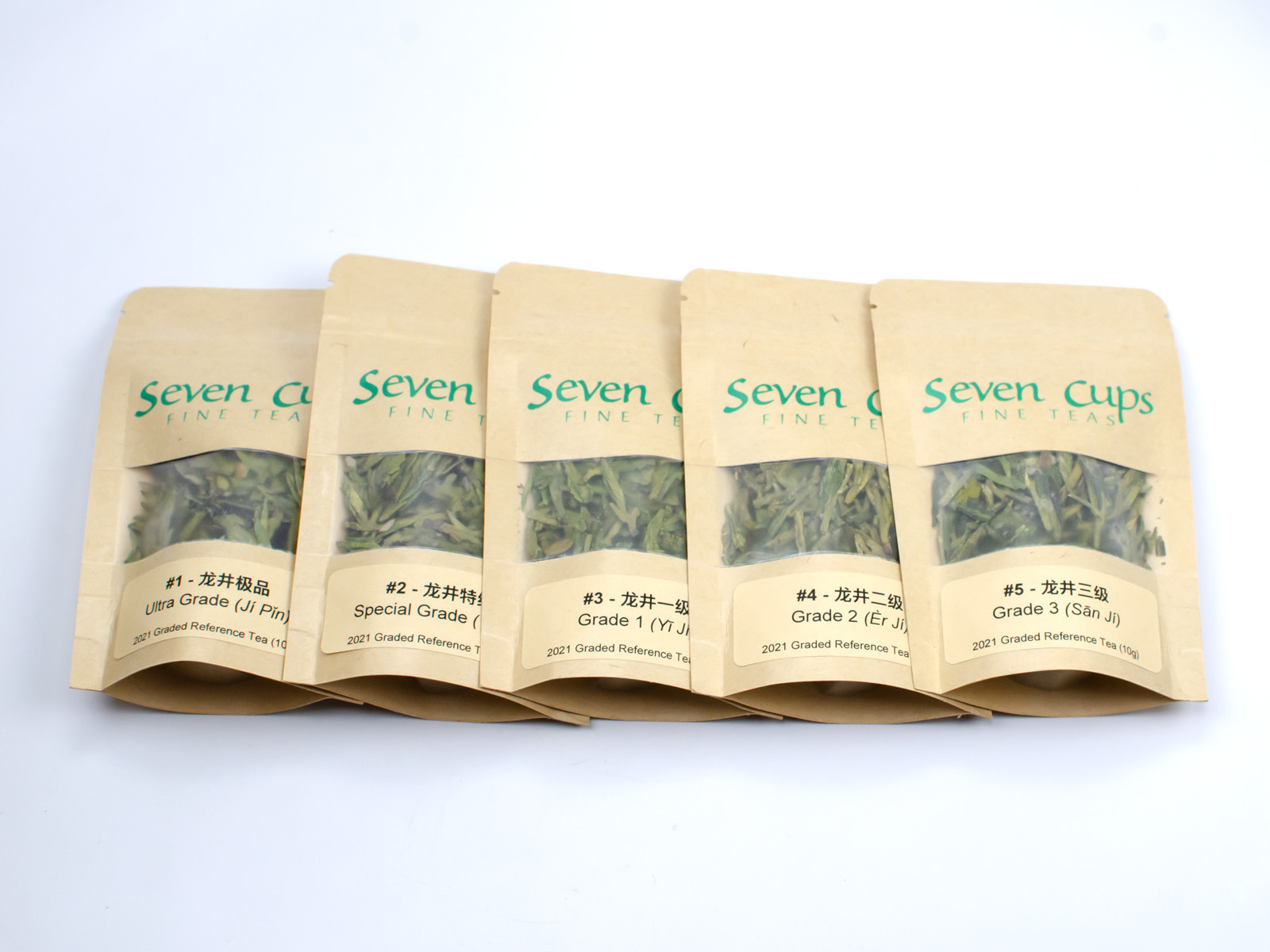
Have you ever been confused by the wild differences in quality between Longjing (Dragon Well) teas? You’re not alone. It’s hard to find a good reference point. We have a limited-run sampler to help.
The Longjing Graded Sampler is a line-up of five different grades of Longjing, grown on the same farm, in the same year, and made by the same tea makers. Set up your own tea tasting and sharpen your senses on exactly what makes a Longjing high-grade.
This is a limited product. Once it’s sold out, it probably won’t return. These teas were sourced for internal training purposes, but we had a little left over. It occurred to us that our customers might be interested in having this educational tool, too.
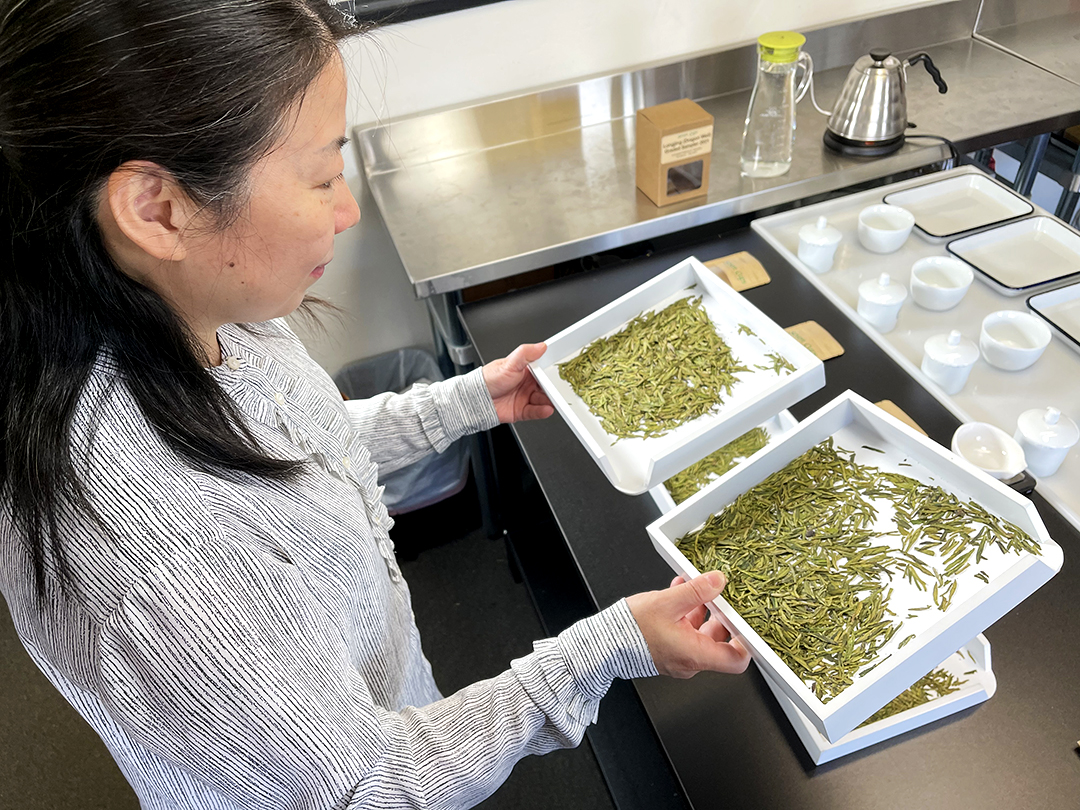
While Longjing is the most famous tea in China, it might also be the most often faked. The market is filled with teas from all different origins and levels of quality, all marketed under the name “Longjing.” There is an official geographic designation and standards for quality, however. The key is just knowing what to look for.
You can learn more about the attributes that make high-quality Longjing and how to look for them on our YouTube channel. This weekend we’re posting a video about Longjing that uses this exact sampler.
